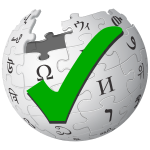This is an information page.
It is not one of Wikipedia's policies or guidelines; rather, its purpose is to explain certain aspects of Wikipedia's norms, customs, technicalities, or practices. It may reflect differing levels of consensus and vetting. |
| This page in a nutshell: New pages created by user with the autopatrolled permission are automatically marked as "reviewed". Granted to prolific creators of 'clean' articles, it does not confer any additional technical abilities and is used solely to manage the workload of new page patrol. |

Autopatrolled is a user right given to prolific creators of clean articles and pages in order to reduce the workload of the New Page Patrol process on Wikipedia.[note 1] New articles and pages created by autopatrolled editors are still listed on new page lists and feeds, but are automatically marked as "reviewed" and "patrolled" in the system, and hence are listed as if a new page patroller has already looked through them and manually marked them as legitimate or acceptable. Users with this right have no additional technical abilities; it does not change how an editor creates articles, nor does it change or "enhance" any aspect of the user experience, user interface, or the ability for an editor to create or modify pages. It only automates a process "behind the scenes" that is normally performed by other users manually.
There are currently 4,802 autopatrolled users.
The differences with the article creation process between users with and without the autopatrolled user right is outlined and detailed below:
Normal process:
Autopatrolled process:
You can request the user right at Wikipedia:Requests for permissions/Autopatrolled or from any administrator who is familiar with your work. Administrators may also assign the right to themselves.
Autopatrolled is typically given to trusted editors who regularly create articles.
There are currently 4,802 users with the autopatrolled user right. In the 12 months prior to April 2022, 55% of the 213 requests were approved.
|
Wikipedia accounts and governance
| |
|---|---|
| Unregistered (IP) users |
|
| Registered users |
|
| Account security |
|
| Blocks, bans, sanctions, global actions |
|
| Related to accounts |
|
| User groups and global user groups |
|
| Advanced user groups |
|
| Committees and related |
|
| Governance |
|